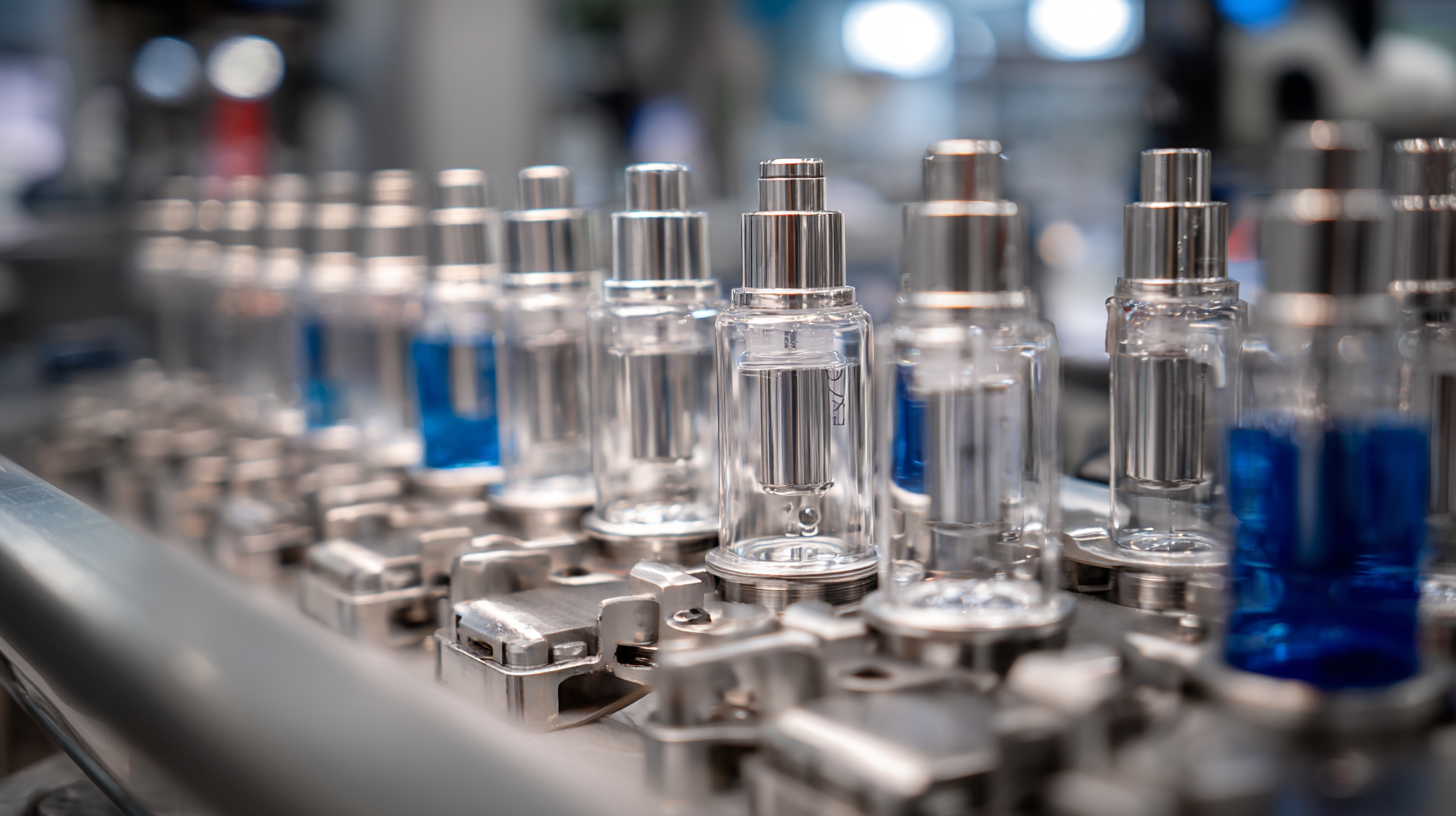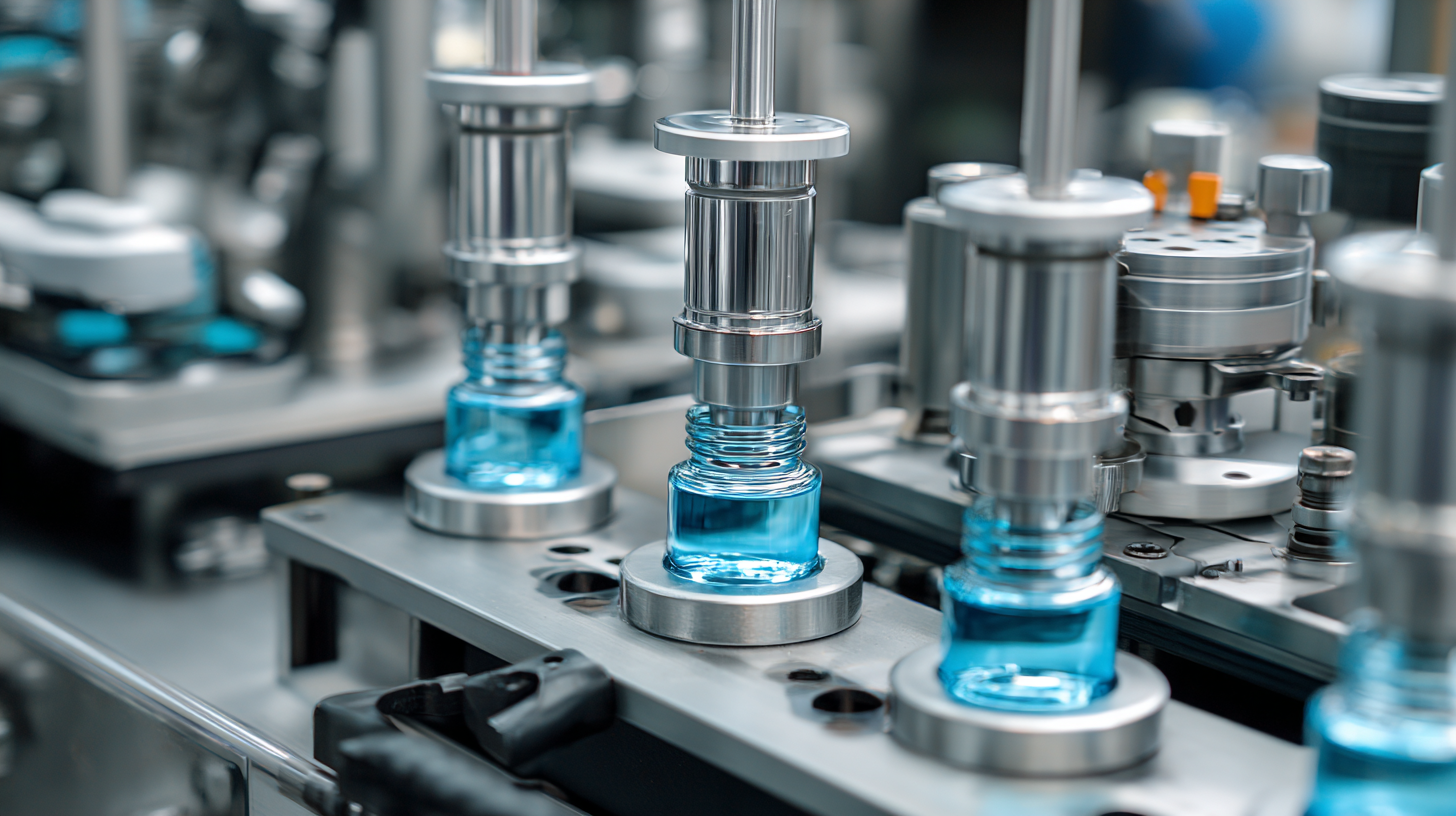Mastering the Selection Process for the Best Cosmetic Filling Machine in Global Markets
In the rapidly evolving world of cosmetic manufacturing, the selection of the right cosmetic filling machine plays a crucial role in ensuring product quality and operational efficiency. According to a recent report by MarketsandMarkets, the global cosmetic packaging market is projected to reach USD 43.64 billion by 2026, with a significant demand for advanced filling technologies. The challenges that arise from improper selection can lead to increased production costs, product wastage, and compliance issues, which ultimately affect a brand's reputation and profitability. Therefore, understanding the intricacies of the selection process for a cosmetic filling machine is essential for manufacturers aiming to thrive in competitive global markets. By addressing common problems associated with different types of filling machines, businesses can make informed decisions that enhance their production capabilities and align with industry standards.

Identifying Key Industry Standards for Cosmetic Filling Machines in Global Markets
When selecting the best cosmetic filling machine for global markets, understanding key industry standards is crucial. These standards ensure not only compliance with safety regulations but also the quality and efficiency of production processes. As the global liquid filling machines market is projected to grow significantly, manufacturers must keep abreast of the evolving standards that affect their operations. This includes adhering to regulations concerning sustainability, such as the reduction of microplastics in packaging, which is becoming increasingly important for consumers and regulatory bodies alike.
Tips for identifying the right standards include researching international compliance guidelines and reviewing industry-specific certifications to ensure your filling machine meets all necessary criteria. Additionally, consider the machine's adaptability to Packaging 4.0 technologies, which will enhance efficiency and sustainability in your production processes.
Moreover, evaluate the long-term trends in the cosmetic filling machine market. With the increasing focus on sustainability, investing in machines that minimize waste and promote eco-friendly practices will not only align with industry standards but will also cater to the growing consumer demand for environmentally conscious products. Prioritizing machines that are capable of aseptic filling can also provide a competitive edge in maintaining product safety and integrity.
Evaluating Supplier Reputation: Metrics for Trustworthiness and Reliability
In today's competitive landscape, choosing the right cosmetic filling machine requires a deep dive into the reputation of suppliers. Trustworthiness and reliability are crucial metrics, as they directly influence production quality and operational efficiency. According to a recent industry report by MarketsandMarkets, the global cosmetic filling machine market is projected to reach USD 3.5 billion by 2026, highlighting the increasing need for reliable partnerships in this sector.
When assessing supplier reputation, several key performance indicators (KPIs) come into play. Analyzing customer reviews, production track records, and after-sales support can provide insights into a supplier's reliability. The 2022 Packaging Machinery Report indicates that manufacturers that prioritize customer satisfaction achieve up to 15% higher market share compared to those that neglect this aspect. Furthermore, engaging with industry forums and trade associations can offer firsthand accounts of suppliers' capabilities and challenges, ensuring that businesses make informed choices.
Top Strategies for Assessing Technological Innovations in Filling Machinery
When assessing technological innovations in cosmetic filling machinery, it is crucial to adopt a strategic approach that prioritizes efficiency and adaptability. One effective strategy is to conduct comprehensive market research to identify the latest technological advancements. This not only keeps businesses informed about emerging trends but also allows them to understand competitors' strengths and weaknesses. Engaging with industry experts and attending trade shows can provide valuable insights into the performance and reliability of new machines, ensuring that potential investments are backed by substantial data.

Another critical aspect is evaluating machine compatibility with various cosmetic formulations. Different products require unique filling techniques; thus, understanding the nuances of each formulation can prevent costly errors in production. Investing in machines that offer flexibility for diverse products—such as creams, serums, and gels—can significantly enhance operational efficiency. Additionally, considering aspects like automation capabilities, ease of maintenance, and user-friendly interfaces will ensure that businesses can quickly adapt to changes in demand while maintaining high standards of quality and precision in their filling processes.
Cost Analysis: Balancing Quality and Budget for Optimal Supplier Selection
When selecting a cosmetic filling machine for global markets, cost analysis plays a crucial role in achieving a balance between quality and budget. The machinery industry is flooded with options, making it essential for businesses to understand their specific needs and how these machines impact overall production efficiency. A robust machine can ensure precise filling, minimizing waste and enhancing product quality. Therefore, investing in high-quality equipment is often justified when weighing long-term benefits against initial expenditures.
However, it is equally important to consider budget constraints. Businesses should conduct a thorough market analysis to compare various suppliers, focusing on the total cost of ownership, which includes maintenance, operational costs, and potential downtimes. Engaging with multiple vendors and soliciting detailed quotes can provide insights into the true financial implications of each option. By meticulously assessing quality versus price across different models, companies can make informed decisions that satisfy both their financial and operational requirements without compromising on product integrity.
Mastering the Selection Process for the Best Cosmetic Filling Machine in Global Markets - Cost Analysis: Balancing Quality and Budget for Optimal Supplier Selection
| Machine Model | Filling Capacity (ml) | Speed (bottles/min) | Cost (USD) | Quality Rating (1-5) | Warranty (Years) |
|---|---|---|---|---|---|
| Model A | 10 | 50 | 15,000 | 4 | 2 |
| Model B | 20 | 75 | 25,000 | 5 | 3 |
| Model C | 15 | 60 | 18,000 | 4.5 | 2 |
| Model D | 25 | 80 | 30,000 | 5 | 4 |
Navigating Regulatory Compliance: Ensuring Safety and Efficacy in Equipment Sourcing
Navigating the selection process for the best cosmetic filling machine requires a keen understanding of regulatory compliance. Ensuring that your equipment meets safety and efficacy standards is not just a legal obligation, but also a critical aspect of maintaining your brand's reputation in the global market. The first step is to familiarize yourself with local and international regulations governing cosmetic manufacturing. Thorough research can help you identify the specific certifications and inspections required in your target markets.
Tip: Always prioritize suppliers who can provide clear documentation of their compliance with industry standards. Requesting certificates from relevant authorities, such as ISO certifications, can save you time and trouble in the long run.
Additionally, engage with consultants who specialize in regulatory affairs for cosmetic products. Their expertise can guide you through the intricate maze of legal requirements, ensuring that your selected equipment aligns with both safety and efficiency benchmarks.
Tip: Consider creating a checklist of regulatory requirements specific to the countries you plan to export to, making the sourcing process smoother and more organized. This proactive approach not only streamlines your operations but also instills confidence in your business practices.

